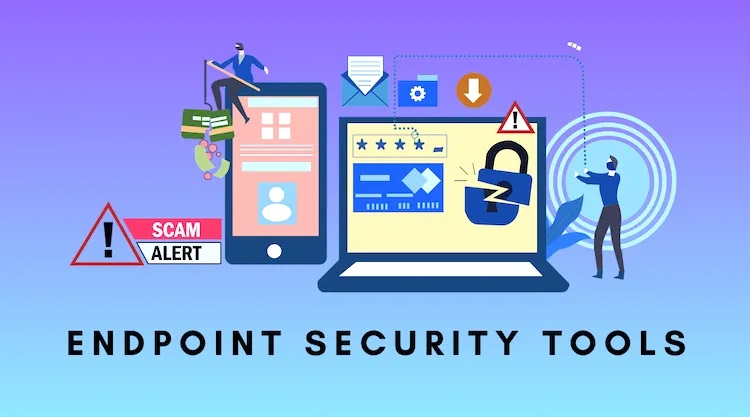Why Every Business Needs an Endpoint Detection Response
Updated on July 24, 2023, by OpenEDR

Is the safety of your company’s confidential information a top priority for you? Concerned about the growing complexity and potential damage of cyber threats? If this describes your situation, you should look at getting an endpoint threat detection and response system in place. Having a reliable EDR system in place is vital in today’s digital age when businesses are under constant attack from fraudsters. What, though, is an EDR (Endpoint Detection Response)? Why is it that every company must have one? Let’s dive in and find out the solutions to these problems, shall we?
What is an Endpoint Detection Response?
Businesses today need to take preventative measures to safeguard their information and assets from the increasingly complex cyber-attacks they face. When it comes to protecting endpoints like PCs, servers, and mobile devices from intrusion, nothing is more effective than an Endpoint Detection Response (EDR).
Endpoint threat detection and response goes above and beyond the capabilities of typical antivirus software by constantly monitoring and analyzing endpoint behaviour in real-time, which standard antivirus software is not designed to do. It’s like an additional defence line, constantly monitoring data transfers, file access, user actions, and system operations. This allows it to swiftly detect any unusual or suspicious behaviour that could suggest an attack.
Businesses that are serious about improving their cybersecurity should implement an endpoint detection response. It lets you keep an eye on everything happening on your endpoints and react quickly to new threats before they can cause any damage to your business.

The Benefits of an Endpoint Detection Response
Keeping ahead of cybercriminals is essential for protecting your company’s data. What you need is an endpoint threat detection and response solution, which stands for Endpoint Detection and Response. There are many ways in which EDR can strengthen your organization’s defences.
As a primary benefit, EDR allows you to monitor your network’s nodes in real-time. This allows you to immediately identify and counteract any malicious behaviour or potential breaches before any real harm is done.
In addition, endpoint threat detection and response tools provide superior threat analysis and detection. Antivirus software may overlook the most sophisticated threats, but these technologies can detect them by continuously monitoring network traffic and endpoint behaviour patterns.
One further major advantage is that incident response processes can be automated. Automating steps like malware elimination and quarantine with EDR can greatly improve the efficiency of your incident response. This not only prevents inconsistency in handling issues but also saves time.
In addition, the analytical capabilities of EDR tools make them extremely useful. Actionable intelligence about new threats and vulnerabilities in your network infrastructure can be gleaned from an examination of data collected at endpoints.
Customers and other stakeholders can appreciate your proactive attitude to cybersecurity when you show it through the implementation of an EDR solution. Having solid endpoint protection measures in place helps reassure your customers that their personal information is safe with you.
If your company needs stronger cybersecurity defences, investing in an Endpoint Detection Response solution is a smart move. This technology gives businesses the advantage they need to maintain security in the face of the ever-changing threats of the modern era by providing features such as real-time visibility and automated incident response workflows.
The Different Types of Endpoint Detection Response
Cybersecurity is a rapidly developing industry that requires organizations to adapt quickly in order to safeguard their data. Endpoint detection and response (EDR) is becoming increasingly popular among companies. But did you realize that several distinct endpoint threat detection and response tools exist? Let’s check out a few of these possibilities.
- Agent-based EDR:
To implement this type of solution, software agents must be deployed to all network endpoints. Real-time danger identification and response are made possible by these agents’ persistent vigilance.
- Cloud-based EDR:
This method, as the name implies, uses cloud resources to gather and examine data from endpoints. Scalability and adaptability make it a good choice for organizations that rely on remote or decentralized teams.
- Hybrid EDR:
Hybrid endpoint detection and response (EDR) systems use cloud analytics to complement the robust security offered by agent-based EDR systems.
- Managed Detection Response (MDR):
With MDR, you can take preventative measures by having a third party handle duties like endpoint security monitoring and incident response. This both protects against new threats around the clock and frees up internal resources.
Businesses may find an EDR solution that works for them by learning about the various options available. Options for improving endpoint security include those that are agent-based, cloud-based, hybrid, or multi-domain reactive.
Cybercriminals are getting more and more clever; therefore, it’s more important than ever to invest in strong cybersecurity measures like endpoint detection and response (EDR). In the next section, we’ll go into the specifics of setting up an EDR system in your organization.
Conclusion – Endpoint Detection Response
Having an endpoint threat detection and response strategy is no longer a luxury but a need for any company due to the rising frequency and sophistication of cyber threats targeting endpoints in recent years. In today’s linked world, investing in strong cybersecurity measures protects not only sensitive data but also reputation, consumer trust, and overall business continuity. Stop putting off endpoint security till tomorrow; what could have been done today?
See Also: